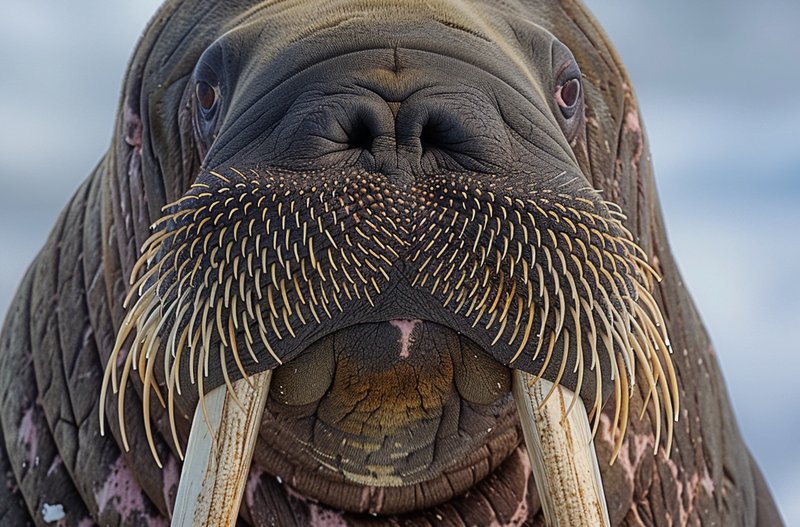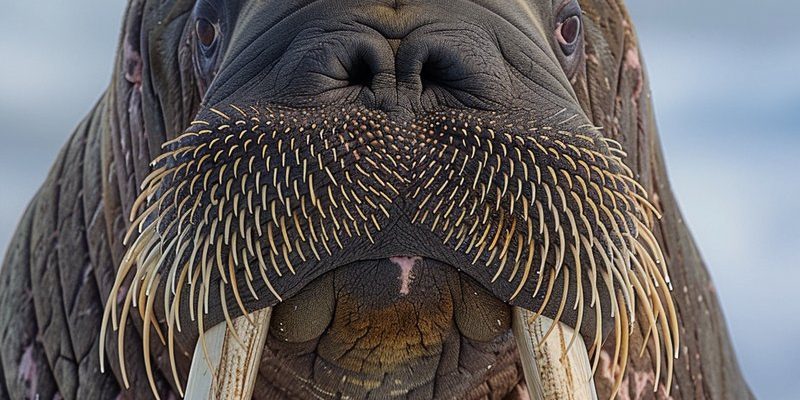
The main problems walruses face are tied to climate change, human activities, and natural predators. Think of these threats as different kinds of party crashers; some are slow and creeping, while others arrive suddenly and cause chaos. In this article, I’ll dive deep into these threats, explaining each one and why they’re so crucial for the survival of the walrus population.
Climate Change and Habitat Loss
One of the biggest challenges facing walruses today is **climate change**. It’s like watching your favorite ice cream melt on a hot day. As the planet warms, the Arctic ice is shrinking, which is incredibly important for walruses. They rely on sea ice to rest, breed, and give birth. With less ice to haul themselves onto, walruses are forced to find new resting places, often on crowded beaches, which can lead to increased competition for space and resources.
Another aspect of habitat loss is the changing landscape of their food supply. Walruses primarily eat mollusks, clams, and other sea creatures that live on the ocean floor. As the ocean warms and becomes more acidic, these food sources are at risk. Imagine trying to enjoy a buffet where half the dishes just aren’t there anymore. Walruses are struggling to find enough food to survive, and this can impact their overall health and reproduction rates.
More importantly, it’s not just about losing ice. The destruction of their natural habitat means walruses are more exposed to threats from predators and human interaction. With fewer safe spaces to rest or breed, walruses face increased stress and vulnerability.
Oil and Gas Exploration
Another critical threat to walruses comes from **oil and gas exploration**. The Arctic region is becoming a target for energy companies eager to tap into its resources. This means drilling, shipping, and various activities that can disturb the delicate ecosystem.
Imagine having a picnic in a beautiful park, only to have loud machinery and construction crews setting up right next to you. The noise, pollution, and physical presence can drive you away from what was once a peaceful spot. Walruses are similarly affected—loud sounds from drilling can scare them away from their feeding and breeding areas, making it harder for them to find food and reproduce successfully.
Moreover, spills or accidents during extraction can lead to catastrophic environmental damage, contaminating their food sources. This adds another layer of stress for walrus populations already struggling to survive. The stakes are high; losing their food sources can lead to starvation and a decline in their numbers.
Human Interaction and Disturbance
Now, let’s talk about **human interaction**. While many of us love to admire walruses from a distance, getting too close can be harmful. This includes everything from boat traffic to tourism. Imagine someone crashing your picnic: it can get messy fast! When walruses feel threatened, they may stampede back into the water, which can lead to injuries or even death, especially in the young or injured ones.
Tourism can also create issues. Many people travel to see walruses, but if they don’t follow guidelines, it can lead to significant disturbances. It’s like being at a concert where some fans are pushing and shoving, ruining the experience for everyone. Disturbances can disrupt essential behaviors like nursing, mating, and resting, putting added pressure on already vulnerable populations.
Additionally, the presence of humans can also lead to an increase in trash and pollution in their habitats. Plastics and other debris can pose physical threats through ingestion or entanglement. You might be surprised—walruses aren’t immune to the effects of pollution that can negatively impact their health and reproduction abilities.
Predation and Competition
In the wild, every creature has a role, and that includes the predators that target walruses. Natural predators such as **orcas** and **polar bears** can pose a threat to vulnerable walrus pups. Just as a pack of wolves might hunt the weakest sheep in a flock, these predators often target the young or sick individuals. This natural predation is part of the ecosystem, but it can become unbalanced when other factors—like decreased ice or food shortages—come into play.
The competition for food is another issue. As the sea ice recedes, walruses are forced into closer quarters with other species that compete for the same food sources. Imagine a buffet line where everyone is trying to grab the same dish. It can get chaotic! When food is limited, the walruses must compete not only with their own kind but also with seals and other marine life, which can impact their overall survival.
Strong competition and increased predation can lead to a ripple effect on the entire walrus population. Reduced numbers mean less genetic diversity, making the species more vulnerable to disease and environmental changes. It’s a tough world out there!
Conservation Efforts and Future Outlook
So, what can be done to help protect these marvelous creatures? Numerous **conservation efforts** are underway to address the issues walruses face. Organizations are working hard to raise awareness about the importance of protecting **habitats**, limiting human interaction, and advocating for sustainable practices in resource management.
Imagine a community coming together to save a cherished park; that’s a similar vibe. Efforts include creating marine protected areas that safeguard feeding and breeding grounds, as well as regulating tourism to minimize disturbances. Everyone can play a role, from vacationing responsibly and backing eco-friendly products to supporting local policies that protect the Arctic environment.
But here’s the thing—conservation requires ongoing commitment and awareness. It’s not a one-off effort but rather a continuous journey toward ensuring the walrus population thrives, even amid changing global conditions.
Final Thoughts
In conclusion, walruses are facing a multitude of challenges in the wild. From climate change and habitat loss to human disturbances and competition, these factors threaten not just their survival but also the delicate ecosystem they inhabit. It’s like a chain reaction—once one link breaks, it can affect the whole system.
Each of us has a role in protecting these magnificent creatures. By understanding the threats they face, we can advocate for better practices and support conservation efforts to ensure the walrus can continue to thrive in its natural habitat. Let’s work together to keep these gentle giants gliding gracefully through the icy waters of the Arctic.

